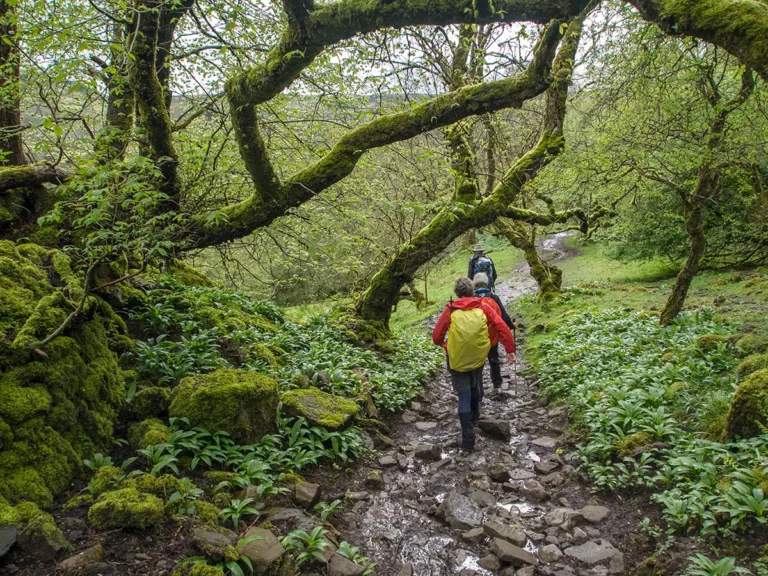You found the perfect hiking boots, comfortable hiking backpack, and your outfit is Instagram-worthy. Did you stop to consider, “do I need hiking socks?”
Yes, you need hiking socks. Hiking socks are essential for comfort and foot protection when hiking across any terrain. With dry wicking in the arid desert and warm insulation for snow hikes, an avid hiker has the right socks for every hike.
By the end of this article, you’ll be armed with the right information to choose the perfect pair for your next hike.
Do I Need Hiking Socks?
Socks are an after-thought in our regular routine, we buy a pack and wear the same type that just does its job. For hikers, deciding the right socks can be as crucial as the right boots. A great hiking sock will be thick, incredibly sturdy, comfortable, have excellent thermal and moisture-wicking properties and be loyal, faithful, and true.
Ok, maybe the last three apply more to your dog, but finding the perfect sock that finally saves your feet from blisters and sweating is everything.
How Long Do Hiking Socks Last?
You can put 1,000 miles on a pair of socks before they’re ready for the trash can. That sounds like a very long distance, but consider that it is only about a year if you take modest hikes every weekend.
In order to walk 1,000 miles, you demand comfort. Demanding comfort may sound over the top, but in hiking, comfort is essential. A 3-mile walk back to the trailhead with blisters and chafing feels like walking all thousand miles in one day.
What To Look For In Hiking Socks
There are four elements that make the perfect hiking sock. Those elements are: moisture wicking, thermal properties, blended material, and padding in the right place.
What is the main feature you should look for when you buy a pair of hiking socks? Padding to stay comfortable. But, the climate in your region — and hiking duration —can make moisture wicking and thermal properties far more vital. Dry feet are happy feet.
1. Moisture Wicking
Good moisture-wicking is mandatory. ‘Wicking’ means taking the sweat produced by your sweat glands off the surface and transporting it away from the foot.
Excellent wicking isn’t about bad-smelling feet. It can save your feet from serious health problems. If the sock fails to wick, you develop fungi, blisters, chafing, and other ugly results.
Our feet have roughly 250,000 sweat glands producing half a pint of perspiration daily. Add a hike in the sun, with each foot wrapped in a boot, and things can get very uncomfortable.



2. Thermal Properties
Thermal properties in hiking socks direct heat away from the foot. The heat escapes from the boot, and your feet remain comfortable. Thermal properties are a must if you plan even moderately long hikes.
You need to keep your feet within a comfortable range in cold temperatures. Excellent hiking socks will keep your feet warm at night and save them from hot, sweaty temperatures during the day.
3. Blended Material
Cotton has its place, but for hiking blended materials are what you need. Socks made of blended material are engineered for the job it provides. They keep your feet dry, comfortable and regulated for heat or cold. The common, and essential materials in hiking socks are:
- Wool: A favorite amongst hikers, wool excels at regulating temperature and is a natural antimicrobial.
- Polyester: Moisture wicking and quick drying, polyester is in many socks and active clothing today. Polyester has great insulating abilities and is a common synthetic material combined with wool.
- Nylon: Nylon is a synthetic material that drys quickly and provides durability.
Aside from the main three materials, silk is often added as a liner while spandex provides elasticity.
4. Padding (in the right places)
When hiking, the toe, ankle bone, and heel get the most wear. A great sock should have thick material protecting those areas without any ridges.
Ridges can irritate as quickly as a pebble in your boot.
Hiking socks should be long enough to come well above the top of the boot and fold down. Don’t worry about stretching, even the most expensive hiking socks will lose elasticity at the top.
Folding socks over the top of the boot prevents them from sliding inside the boot when on a trail. This tip will save you from frequent stops to fish out your socks or re-tie your boots.
Still, get a style and brand that don’t lose elasticity quickly. Hiking socks are more expensive than other types ($18-$24 per pair or more), and you don’t want to replace them every month or two.
When hiking in shoes rather than boots, the padding from hiking socks can help secure your feet, avoiding injuries like hiker’s toenail or uncomfortable numbness in your toes.
Final Thoughts.
When choosing hiking socks, its best to have several pairs. Having a variety of pairs gives you flexibility for different terrains, conditions, and hike length.
For fit, a hiking sock should be snug, but not too tight.
When you find the perfect pair that works for you, buy three. A superior hiking sock is as good as gold.
Share this article and tell us your new favorite pair of socks.








